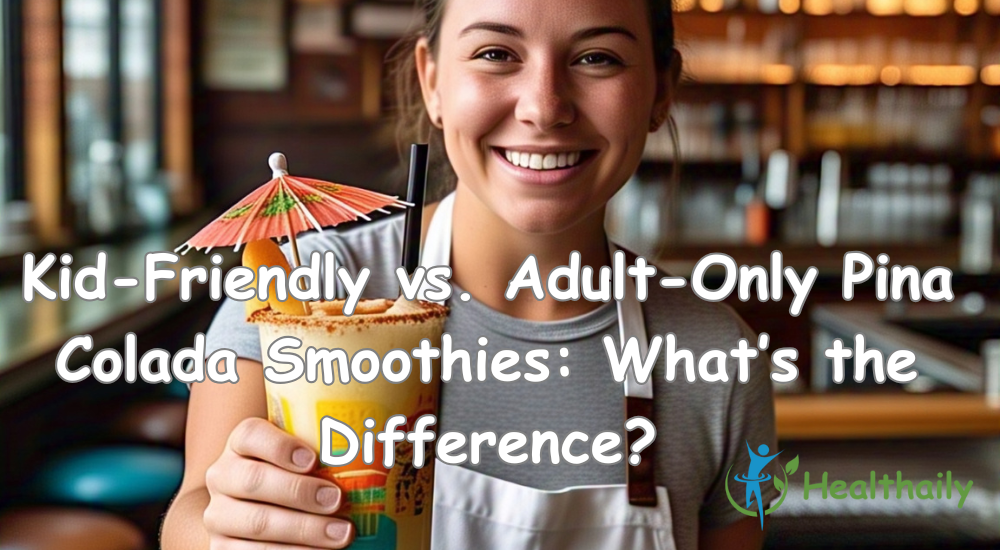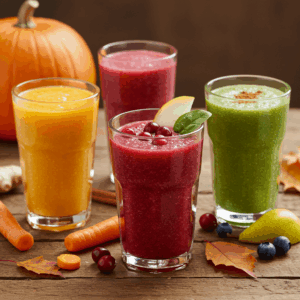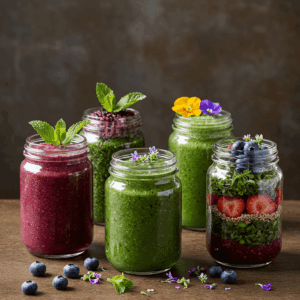Now Reading: Is Your Piña Colada Smoothie Too Sweet? Here’s How to Fix It Naturally
-
01
Is Your Piña Colada Smoothie Too Sweet? Here’s How to Fix It Naturally
Is Your Piña Colada Smoothie Too Sweet? Here’s How to Fix It Naturally

Piña colada smoothies are tropical, creamy, and refreshing. But let’s be honest—sometimes they turn out way too sweet.
Maybe the pineapple is too ripe. Maybe the banana is overripe. Or maybe the coconut milk adds more sugar than you expected. The result? A smoothie that tastes more like dessert than a nourishing drink.
I’ve been there.
At first, I tried using less fruit. Then I tried skipping the banana. But those fixes often made the smoothie bland or too thin. I wanted to enjoy the tropical flavor without the sugar overload.
So I experimented.
I found natural, healthy ways to balance the sweetness and keep that creamy piña colada taste.
Here’s everything I’ve learned about why your smoothie is too sweet—and how to fix it naturally.
Why Piña Colada Smoothies Often Taste Too Sweet

Before we fix it, let’s talk about what makes this smoothie sweet in the first place. These are the usual suspects:
1. Ripe Pineapple
Fresh or frozen pineapple is very sweet—especially when ripe. It has a high sugar content that can overpower everything else.
2. Banana
Banana is often used to add creaminess. But ripe bananas are loaded with natural sugars.
3. Sweetened Coconut Milk
Not all coconut milk is created equal. Many store-bought versions (especially cartons) contain added sugars.
4. Added Sweeteners
Maple syrup, honey, agave, or dates may sneak into the recipe. That can push the sweetness over the edge.
5. Blending Too Much Fruit
If you’re blending in mango, orange juice, or another sweet fruit along with pineapple and banana, things get syrupy fast.
How to Fix an Overly Sweet Piña Colada Smoothie Naturally
I like to fix sweetness using natural, whole-food options. No artificial flavors. No weird aftertastes. Just real ingredients that restore balance.
Here are the most effective methods I’ve tried—and how to use them.

1. Add Fresh Lime Juice
Lime juice cuts through the sweetness instantly. It adds brightness and tang that balances the sugars in fruit.
How I Use It:
- Add 1–2 tablespoons of fresh lime juice while blending
- Taste and add more if needed
Lime brings back the tropical flavor—but keeps things fresh, not syrupy.
2. Add Plain Greek-Style Coconut Yogurt
If you’re using coconut milk and banana, a splash of yogurt helps. It adds creaminess without sugar.
Plain coconut yogurt also brings a slight tang that reduces perceived sweetness.
How I Use It:
- Add ½ to 1 cup of unsweetened coconut yogurt
- Use in place of some coconut milk for a thicker, less sweet result
Look for unsweetened versions with no added flavors or sugars.
3. Throw in Frozen Cauliflower
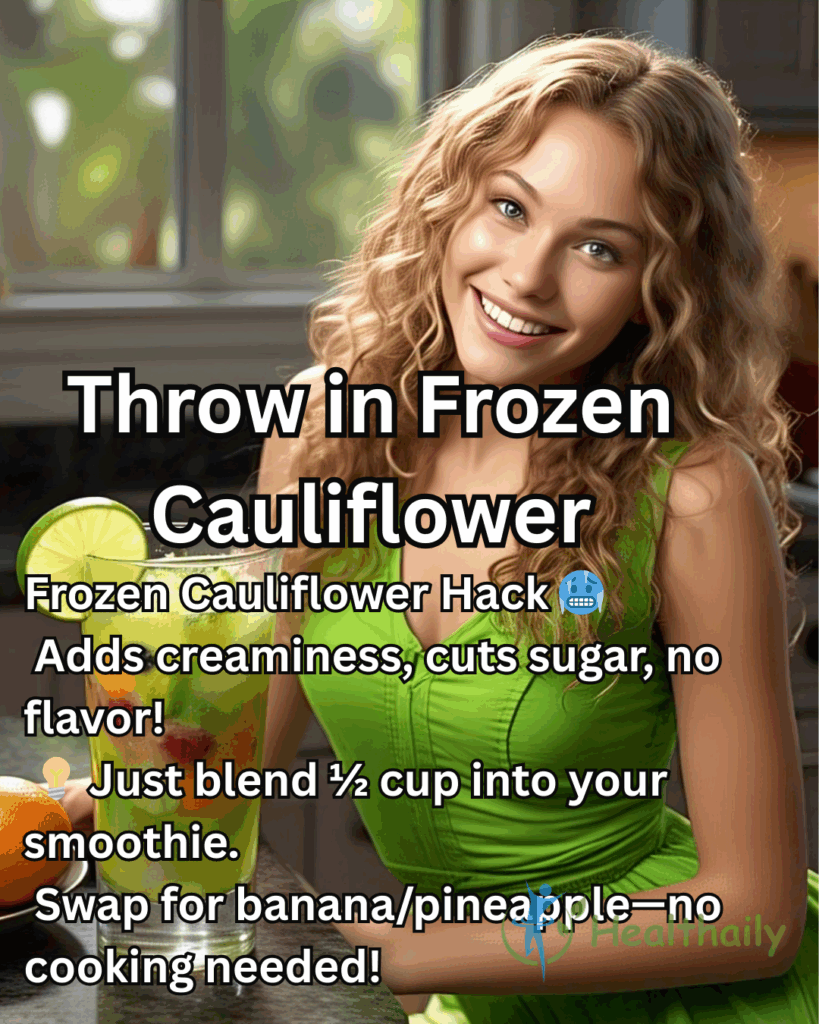
It sounds strange, but frozen cauliflower is my secret weapon.
It adds thickness, reduces sweetness, and blends in with no taste.
How I Use It:
- Add ½ cup frozen cauliflower florets
- Blend it with the smoothie—no need to cook
- Use in place of some banana or pineapple
The texture stays creamy, and it dulls the sugary taste without changing flavor.

4. Add Oats
Rolled oats absorb some of the sweetness. They also make the smoothie more filling and grounded.
How I Use It:
- Add ¼ cup rolled oats before blending
- Let sit for 5 minutes so they soften
- Blend thoroughly for a smooth finish
This works especially well if you’re making a breakfast smoothie.
5. Use Unsweetened Coconut Milk or Dilute It
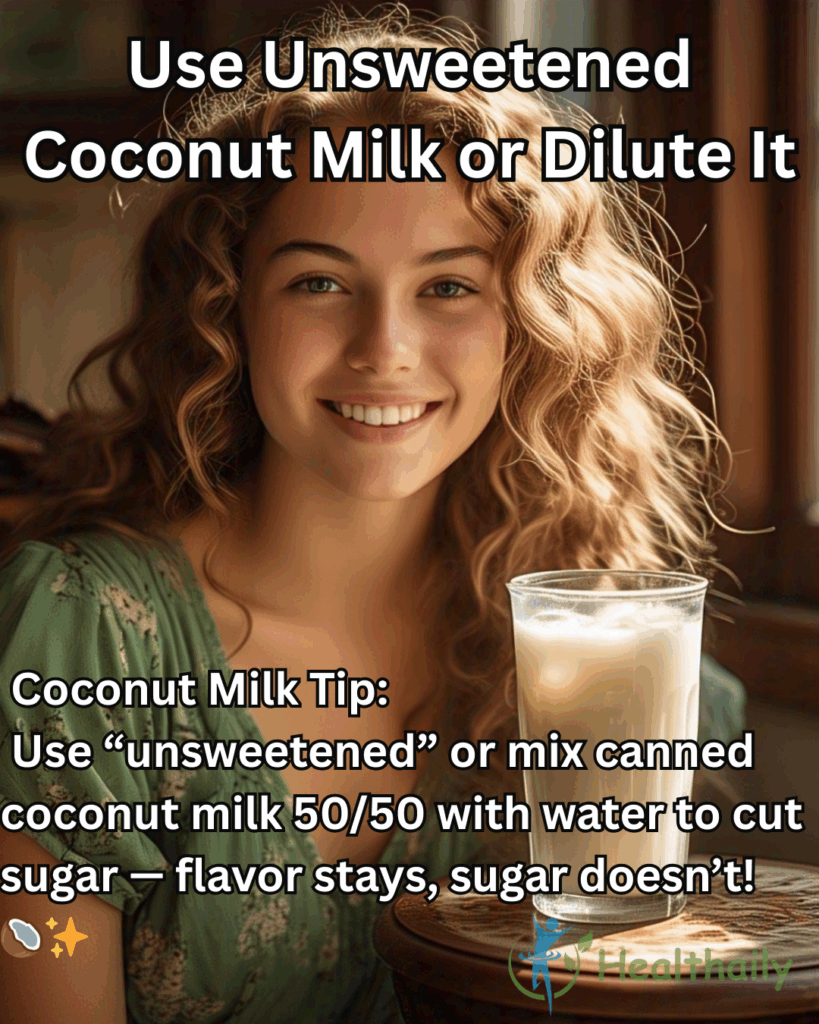
Check the label on your coconut milk. If sugar is listed, switch brands or dilute it.
My Tip:
- Mix half canned coconut milk with half water
- Or use a carton version that’s labeled “unsweetened” and “no added sugar”
This still gives you the coconut flavor without the sugar load.
6. Use Less Banana or Swap It
Ripe bananas can turn a smoothie into a sugar bomb. If your smoothie is too sweet, try using less or replacing it.
My Substitutions:
- Use ½ banana instead of 1
- Swap banana for ¼ avocado
- Try ½ cup frozen zucchini for creaminess and bulk
- Use unsweetened coconut yogurt instead
You’ll still get a smooth texture but without the overpowering sweetness.
7. Add Chia Seeds or Flaxseeds
Both chia and flax reduce the sweet taste and boost nutrition.
They also slow sugar absorption, so you avoid energy crashes.
How I Use Them:
- Add 1 tablespoon chia seeds or ground flaxseeds
- Let sit 5–10 minutes before blending (especially for chia)
- Blend until smooth
They thicken the smoothie and reduce the sugary taste naturally.
8. Add Ice or Frozen Watermelon

If you don’t want to change ingredients, add more ice. It dilutes the sweetness.
Frozen watermelon also works. It adds volume and a hint of freshness—without piling on sugar.
My Tip:
- Add ½ to 1 cup ice
- Or ½ cup frozen watermelon chunks
- Blend and taste
It lightens the smoothie while keeping it cold and refreshing.
9. Use Spices for Balance
A touch of spice can cut sweetness in a subtle but effective way.
Try:
- Ground ginger (¼ teaspoon)
- Cinnamon (½ teaspoon)
- Cardamom (a pinch)
- Nutmeg (a pinch)
These spices round out the flavor and balance fruit sugars naturally.
10. Avoid Juice Bases
Don’t use fruit juice as your smoothie base—especially orange or pineapple juice.
Stick to coconut milk, water, or almond milk. This instantly cuts down on sugar.
A Balanced Piña Colada Smoothie Formula
Here’s the formula I use now to avoid overly sweet smoothies:
Balanced Piña Colada Smoothie (Base Recipe)
- 1 cup frozen pineapple
- ½ banana
- 1 cup unsweetened coconut milk
- ½ cup coconut yogurt (plain)
- ½ cup frozen cauliflower
- 1 tablespoon chia seeds
- Juice of 1 lime
- Ice as needed
Optional additions:
- ¼ avocado
- ¼ cup rolled oats
- A pinch of ginger or cinnamon
Blend until smooth. Adjust lime or yogurt to balance taste.
Download below infographic for future use
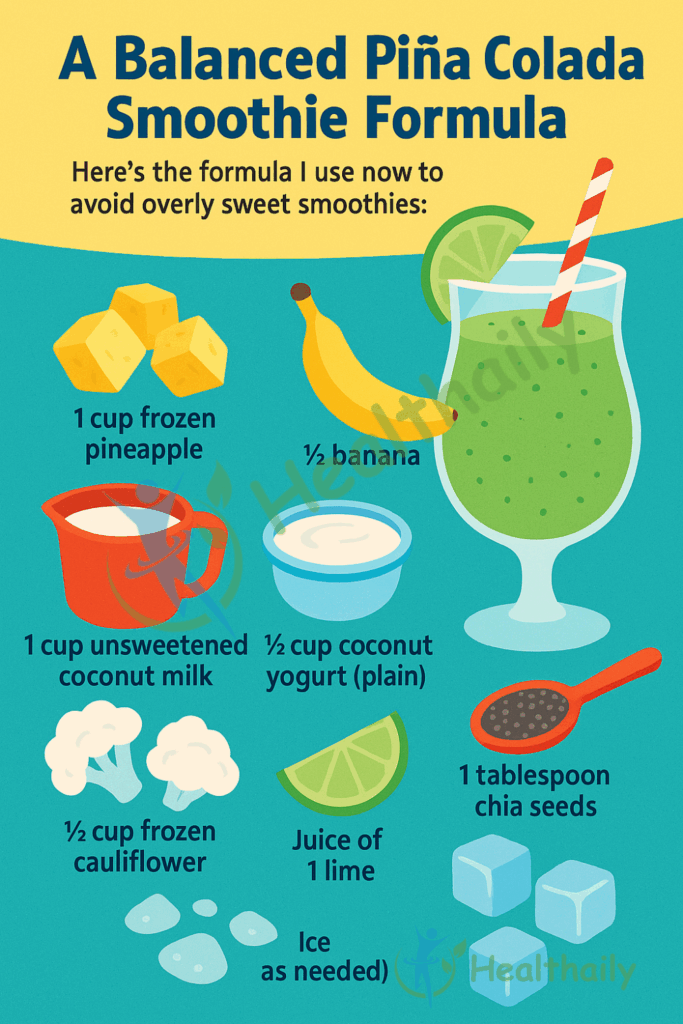
Taste Test: How to Know if It’s Still Too Sweet
After blending, I taste the smoothie and ask myself:
- Does it taste more like fruit or candy?
- Do I feel refreshed or overloaded?
- Can I drink the whole thing, or do I need water after a few sips?
If it’s too sweet, I go back and adjust—add more lime, ice, yogurt, or cauliflower until it tastes just right.
Frequently Asked Questions
Q: Can I fix a smoothie that’s already blended and too sweet?
Yes. Add fresh lime juice, extra yogurt, ice, or frozen cauliflower. Re-blend to balance the flavor.
Q: Is fruit sugar bad?
Not in moderation. Whole fruits come with fiber and nutrients. But overdoing it in smoothies can spike blood sugar, especially in the morning.
Q: Should I skip banana entirely?
Only if needed. You can reduce or swap it for avocado, frozen zucchini, or coconut yogurt.
Q: Are protein powders helpful?
Yes. Unsweetened vegan protein powders can balance sweetness and add substance. Choose unflavored or vanilla for the best results.
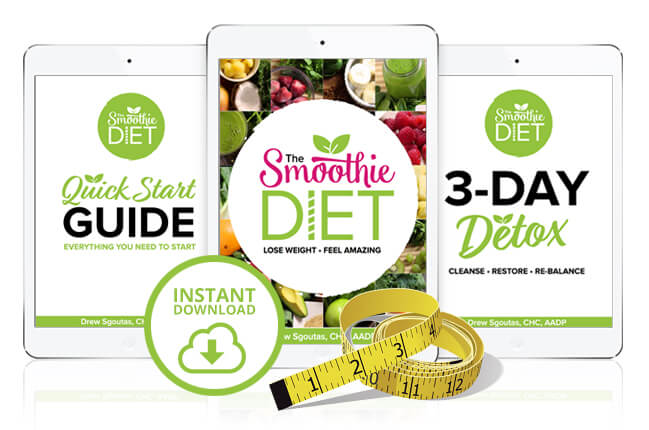
Download The 21-Day Smoothie Diet Right Now!
Why I Care About Smoothie Sweetness
When my smoothies were too sweet, I noticed:
- I got hungry again within an hour
- I felt sluggish or shaky
- I had sugar cravings the rest of the day
- I crashed by mid-morning
Now that I’ve fixed the balance, I feel full, focused, and satisfied.
I drink smoothies almost daily—so the flavor needs to work with my body, not against it.
The Takeaway: Keep the Flavor, Ditch the Overload
You don’t need to give up sweet, tropical smoothies.
You just need balance.
With small changes—like using less banana, adding lime juice, or tossing in some chia—you can enjoy your piña colada smoothie without it tasting like a dessert.
And when your smoothie tastes just right?
It becomes a meal you look forward to.
Try These 3 Balanced Recipes
1. Tangy Piña Colada Smoothie
- 1 cup frozen pineapple
- ½ banana
- 1 cup coconut milk (unsweetened)
- 2 tablespoons lime juice
- ½ cup coconut yogurt
- 1 tablespoon chia seeds
- Ice to taste
2. Creamy Green Piña Colada
- 1 cup frozen pineapple
- ¼ avocado
- ½ cup frozen zucchini
- 1 scoop vanilla vegan protein
- 1 cup coconut milk
- ½ cup coconut yogurt
- 1 tablespoon flaxseeds
3. Morning Fuel Piña Colada
- 1 cup pineapple
- ½ banana
- ¼ cup oats
- 1 tablespoon almond butter
- 1 tablespoon chia seeds
- 1 cup almond-coconut milk (unsweetened)
- 1 tablespoon lime juice
Final Thoughts
If your piña colada smoothie is too sweet, you don’t need to give it up. You just need to rebalance it.
Use lime juice. Use fiber. Use coconut yogurt. And stay away from added sweeteners and juice bases.
Once you find your balance, you’ll never go back. You’ll get the tropical flavor, the creamy texture, and the energy boost—without the sugar crash.
Now your smoothie is more than tasty. It’s smart.












